Wallasey Blitz
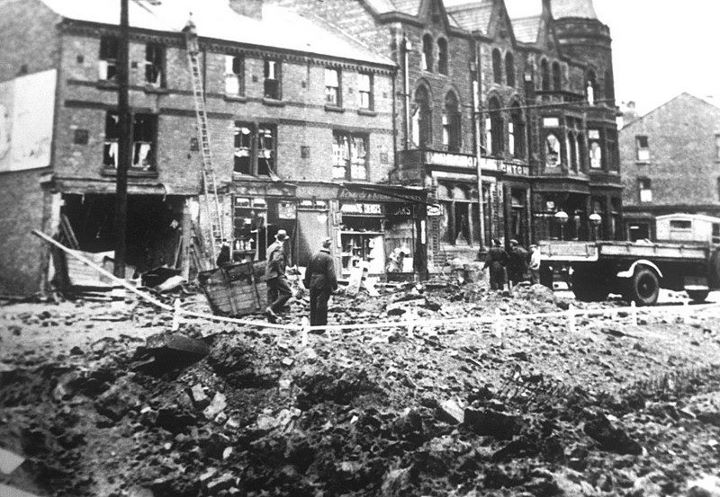 Bomb Damage WW2 - opposite the Town Hall |
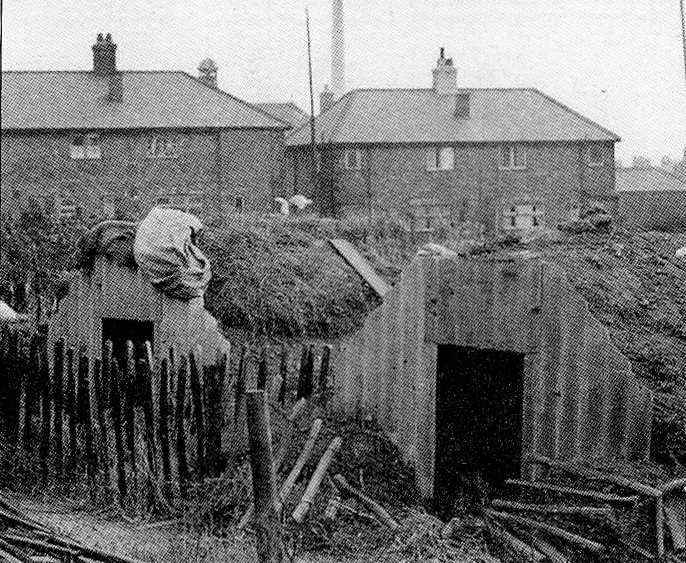 Anderson Shelters in Wallasey |
| The first bombs in Wallasey fell on Adelaide Street, Poulton, on the 10th August, 1940, about half an hour after midnight. Seven high explosive bombs wrecked property, killed four people and seriously injured four others; in all there were thirty-two casualties. Around midnight on August 17th, Liverpool had its first bombs. Wallasey suffered again on August 30th, and the last day of the month brought a comparatively heavy attack on Liverpool, Birkenhead and Wallasey. Among the first places to be hit were Adelaide Street, Cliff Road, East Street, Field Road, Florence Cottages, Gorsey Lane, Ingleby and Ladyewood Roads, Lily Grove, Mill Lane, Stroude's Corner, Rake Lane, Palatine Road and St George's Mount; the Town Hall was damaged on 31st August. In September, Wallasey was bombed nine times, in October three times and many times in November. To illustrate the danger to the ARP workers, on September 17th a bomb struck an AFS post killing eight members of the AFS inside it. After a heavy raid on November 28th/29th there was a lull until December 20th, the beginning of the Christmas raids. The raids started about 6.30 p.m. on the 20th, became heavier on the night of the 21st and eased somewhat on the 23rd. At this period 119 people were killed and 91 seriously injured. |
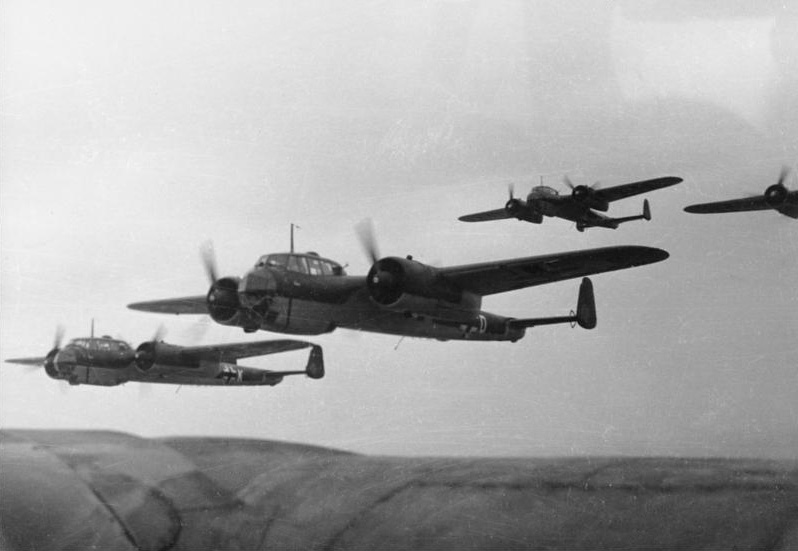 |
| With the New Year, attacks lessened for a time, but in January there were three raids. Then followed more than a month of peace and quiet. February brought two raids on the 15th and 24th; and a fortnight later came another very heavy attack. About 9 p.m. on the evening of March 12th flares were dropped, and on the nights of the 12th, 13th and 14th the Cheshire side of the river took the brunt of the attack. In Wallasey within two hours of the first onslaught water for fire fighting failed completely, the trunk main having been fractured by a bomb. The electricity works at Poulton were damaged and the two gas-holders at the adjoining gas works rendered useless. This was Wallasey's worst raid of all: the bombing was widespread, with great damage to property. The areas of heaviest destruction included Church Street, Lancaster Avenue and Foxhey Road. A very large number of houses were made uninhabitable and eleven churches were hit. The death roll totalled 174, with 158 seriously injured; in addition 10,000 people were made homeless. The ARP services worked devotedly and unceasingly during the raids, an example to the whole country, were the words used by Mr Herbert Morrison, Minister of Home Security when on a visit to Merseyside. |
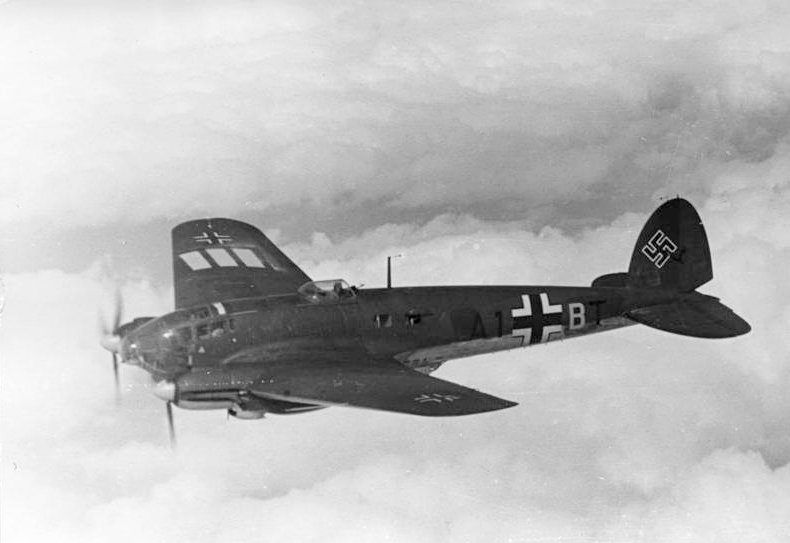 |
|
One of the strangest episodes of all blitzed Britain occurred when Lancaster
Avenue (image on the right) and Wimbledon Street were bombed in the early hours of March 13th and
thirty people were killed, most of them in a communal shelter. On Sunday
morning, March 16th three and a half days later, a rescue party heard what they
thought was a kittens faint mew below them in the debris. Listening in silence
they heard it again, it was a babys cry. Getting feverishly to work, the three men made their way towards where a child of a few months was lying buried and half choked with dust. Moving like cats themselves, lest one ill judged gesture should loose a pile of debris on to the child, they finally reached it, gave it first aid, wiped the dust from its mouth and released it. The child had lain there three and a half days, from the time the bomb exploded in the early morning of the fateful March 13th to the moment of its rescue almost incredible, but true. The babys parents had both been killed, their bodies protecting the child from harm. The baby was taken to the Victoria Central Hospital where she responded to treatment and is alive and well today. |
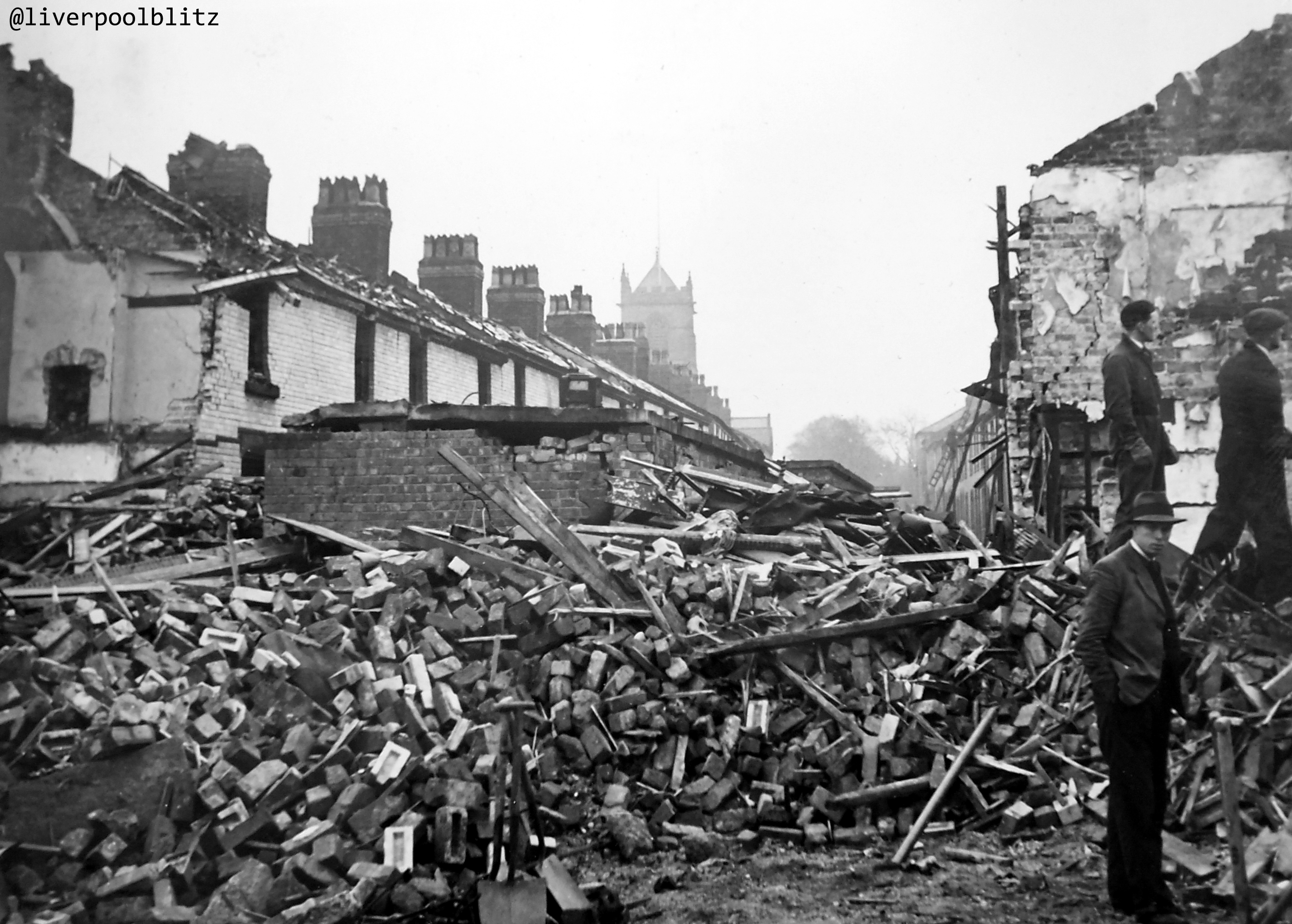 |
 Green Lane Home Guard AA Gun. Image: Don Verdin (the actual gunner!) |
Intermittent raiding took place until the beginning of May when a series of attacks continued for eight successive nights. Some heavy damage to buildings occurred, and the Royal Daffodil II was sunk at her moorings at Seacombe Stage. But although there were 7,500 people homeless after the raids, Wallasey suffered comparatively less than other Merseyside towns, only three citizens being killed as against 1,500 in Liverpool. Germany soon afterwards was involved with Russia on the Eastern Front and Merseyside was never again raided in force; the last raid, recorded as number 43 took place on 1st November 1941 and caused damage and casualties in the Vyner Road, Prospect Vale and Beverley Road area. |
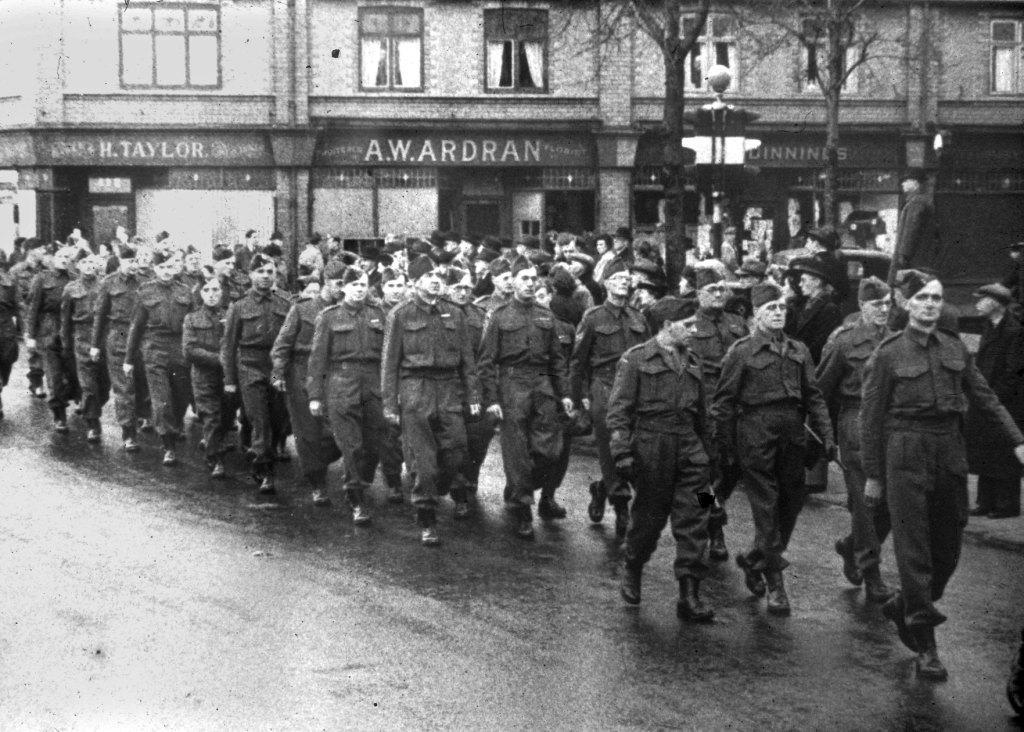 Wallasey Home Guard (Note the Warrant Officer out of step!!) |
|
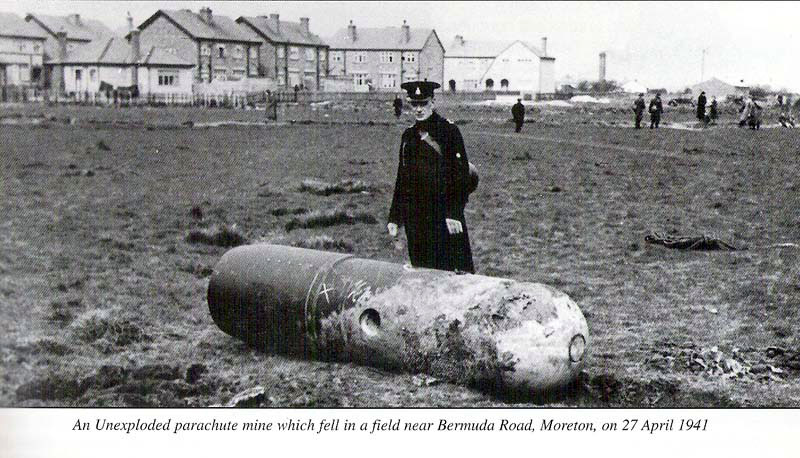 |
|
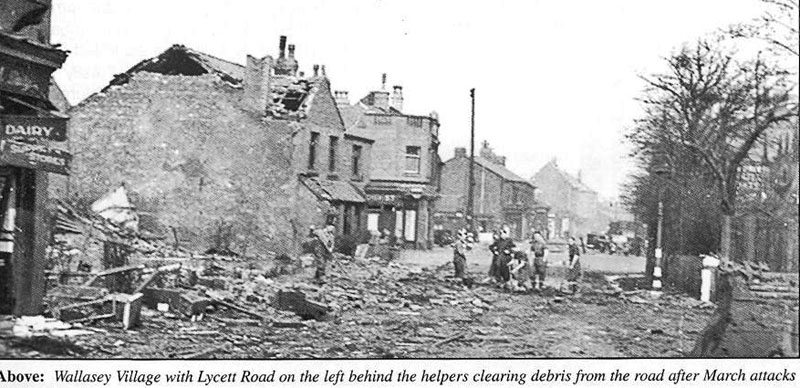 |
|
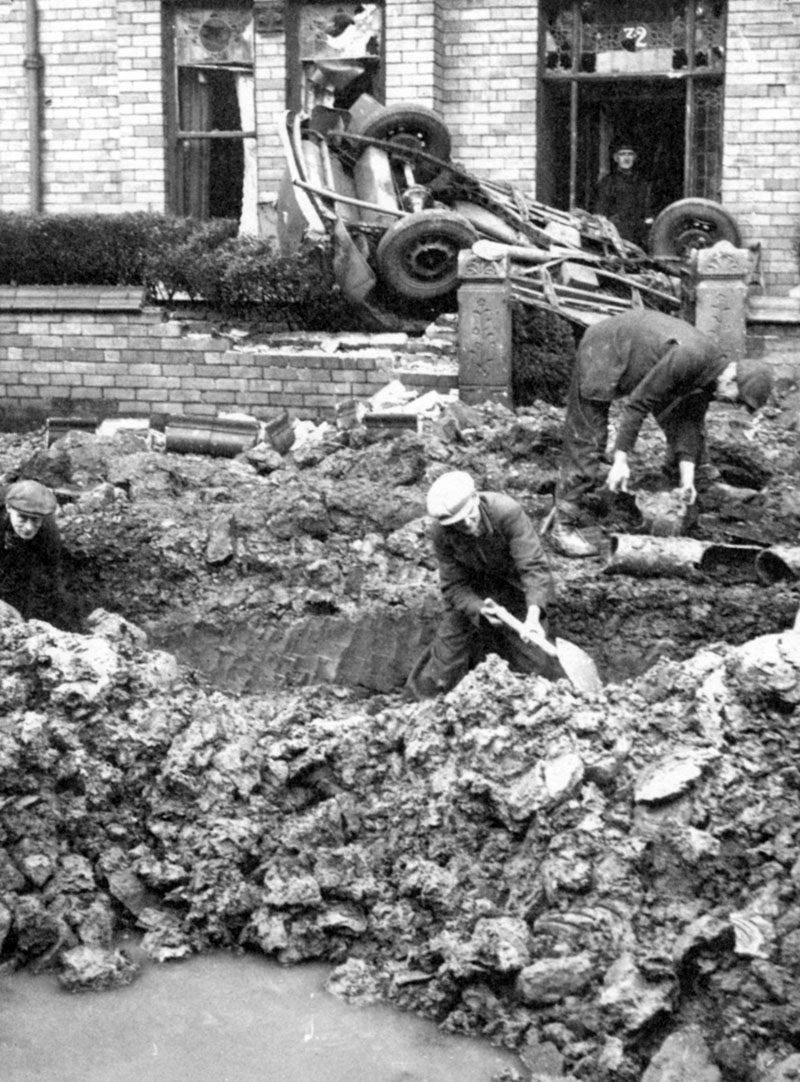 Brougham Road bomb damage 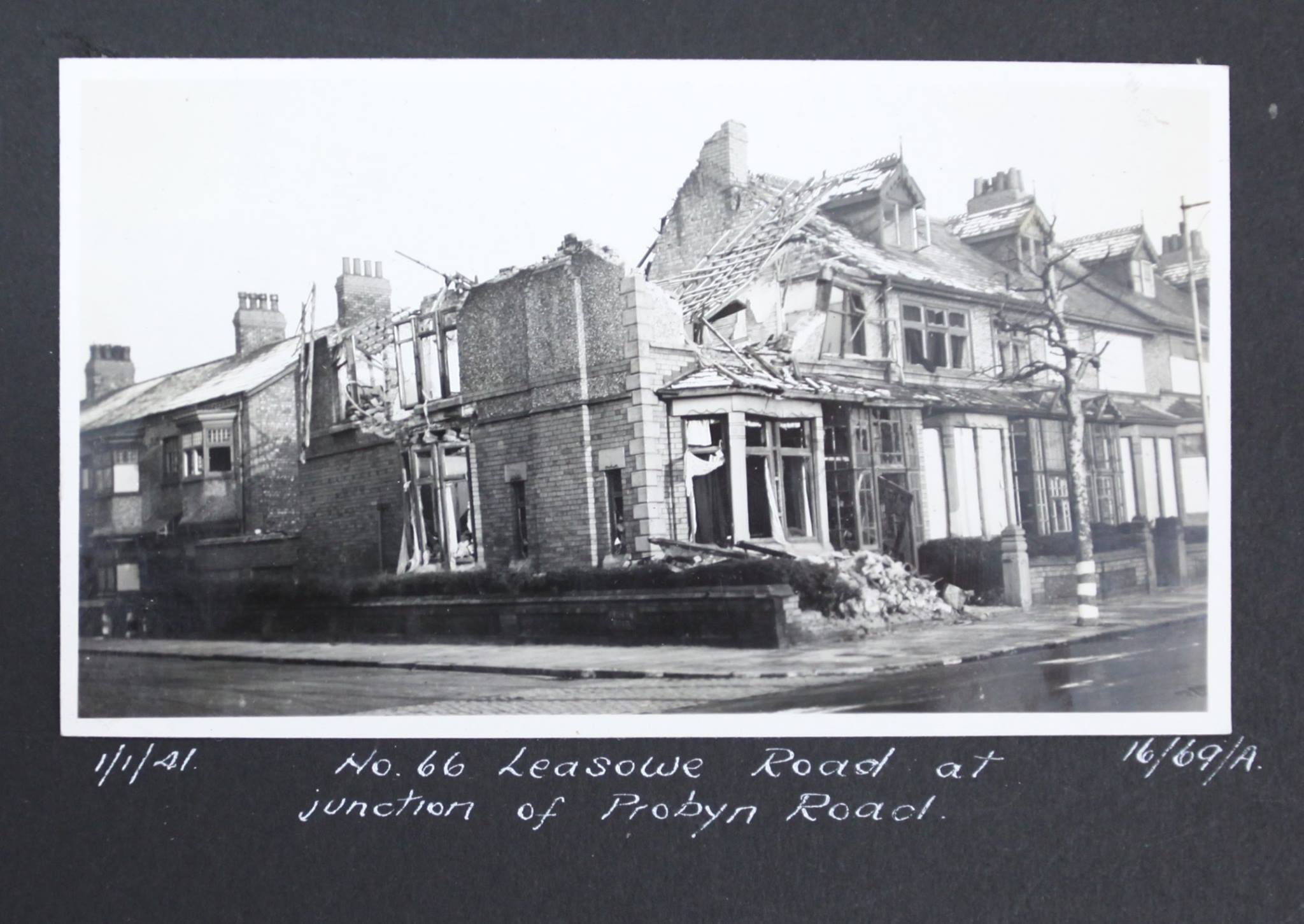 Courtesy of Wallasey Central Reference Library |
|
|
A monument commemorating those who lost their lives was erected in Rake Lane Cemetery. The inscription reads: This memorial is erected to honour the 324. non-combatant residents of Wallasey of whom 51 rest here who lost their lives by air attack from the enemy during the Second Great War, 1938-1945. In Wallasey, as a largely residential town, houses and people bore the main weight of the attacks. In addition to the killed, 275 were seriously injured and more than 600 less seriously. Houses totally destroyed numbered 1,150, and 17,000 were damaged; in fact, it would have been difficult to find a house in the older part of the town that had escaped damage entirely. There were 500 alerts, and 658 high explosive bombs, including 17 parachute mines, are known to have fallen on the town, together with thousands of incendiaries |
|
|
WW2 in Wallasey - part of the history of Wallasey Fire
Brigade - these are extracts from the whole and not the whole thing.
Copied with permission. At the outbreak of war in September 1939, there were 120 separate Fire Brigades in Britain with each Brigade operating independently. The AFS had been formed in 1938 with the Secretary of State at the Home Office in charge of some 1,500 brigades in Great Britain. A total of400 members of the Auxiliary Fire Service were enrolled as full-time Firemen. A number of the younger men had joined the Forces so the Fire Service had enlisted civilians and these men had to be trained with some of the original men being quickly promoted. The NFS became a reserved occupation and those men who had joined the Forces could return to the Fire Service if they so wished. Many of the trained young men were called up to go into the Army and it was being realised that these men would be better back home fighting fires. Firemen were taught to avoid heroics and the saving of another life was the only justification for risking his own. They were to face many dangers and long hours of fighting fires caused by enemy bombs, whilst under continuous attack. The AFS men were unpaid volunteers who came from all walks of life with many of them having jobs during the day and coming on duty at night after work. The Blackout came into force and one of its many victims was 75 year-old Lawrence Law of Green Lane who was knocked down by a motor car on 5 October 1939 during the Black-Out and was killed instantly. On Sunday 31 March 1940 a large scale test of Wallasey's Civil Defence took place with almost 2,000 being engaged. A mock Air-Raid was staged and fires were lighted in various parts of the town which were quickly dealt with. The exercise was watched by the Mayor and members of the Emergency Committee. It is interesting to note that as from 1 May 1940 Mr Herbert Winstanley, OBE was appointed Chief Constable of Liverpool and Director of their Fire Brigade. He served in the Liverpool Police for 33 years but was not related to the Winstanley family of Wallasey. The Brigade cost £5,656 to maintain for the year ending 31 March 1940. They had been called out 111 times and they had prevented over £133,500 worth of property from being burnt. However, there was more than £2,500 worth of damage caused. The Ambulance, as always had been kept busy. There had been 2,197 patient journeys and they had attended 104 road accidents. Some 487 cases for the Public Assistance had been dealt with and 96 prisoners had been conveyed to and from destinations. There were 66 washed-up bodies on the beaches which had to be collected and taken to the mortuary. The old Fire Station in Brougham Road was reopened. Whenever bombs fell, more often than not fires resulted which meant that the Firemen's resources were called upon. Seven high explosive bombs were dropped on Wallasey in August 1940, followed by further air-raids and the Fire Service had to deal with the resulting fires. At times there were so many that obtaining water was difficult especially when large number of the borough's water mains had been fractured. One of the answers was for water to be brought in from inland Brigades in water carriers. Another was to set up EWS (Emergency Water Supply) tanks in various parts of the town to be used in emergency to combat fires including one on the comer of Manor Road and Belgrave Street and another in Imperial Avenue and one being by the side of the Egremont Presbyterian (now the Manor Church Centre) at the Seabank Road end of Manor Road. Most of them were rectangle but a few were circular. These tanks would attract children who would take the opportunity to sail their little boats. ln St George's Park there was a sunken canvas EWS reservoir. This was filled by taking water from the boating lake, along the promenade, up Tollemache and Hope Streets, up Rowson Street to St George's Park. Wallasey had two water supplies (there were also wells in Seaview Road), Leasowe Road and another by the Penny Bridge. Both of these later suffered bomb damage. Water was pumped from the West Float to Central Park lake by hose. When water had to be pumped from long distances, several relay pumps would be deployed. e first gun shots of the war were fired from Fort Perch Rock when some residents thought it was the one o'clock gun. Some 15 minutes after the declaration of war, the battery fired two 6 inch shells from No.2 gun across the bow of a fishing boat that was entering the closed Rock Channel. Captain Charles Cocks was in command of the Fort (he later became Colonel). They also opened fire on what was thought to be an enemy submarine. The Army had taken over" Cliff Villa" in Wellington Road and 4.5 guns were mounted in the grounds. All the eligible young men were called-up for the Army. The LDV (Local Defence Volunteers) units were set up in various parts of the town, later to be called the Home Guard. Upwards of 2,500 answered Mr Anthony Eden's appeal with many of them on duty all night and after some breakfast, would set off for their day jobs. Mr. William Duncan Taylor, JP was appointed Group Commander of the 16th Cheshire (Wallasey) Battalion. Air-Raid Sirens were installed on the roofs of tall buildings in different parts of the town. One was on top of the Central Fire Station in Liscard Village. Air-Raid Wardens patrolled the streets at night and knocked at the door of houses when they spotted the slightest chink of light from the blackout curtains. Barrage Balloons were seen all over the town, being usually stationed in parks. One of the Barrage Balloons broke away from its moorings in l941 and became entangled in the tower of St James' Church, New Brighton, causing damage to the stonework. Another one escaped from a site in Liscard and men had to climb onto the roofs to gather up the cable. Over 10,000 people were homeless and cared for in Rest Centres. During the March (1941) blitz, some 2,000 gallons of hot soup and beef sandwiches were handed out. A large number of people were homeless and had to find new places to live. Some went to live with friends or relatives locally, others moved farther afield - North Wales was a popular choice. Food canteens were sent by Major J Becke. A little later mobile canteens arrived from as far as Ashton-under-Lyne and Manchester. These were organised by Mrs Dorothy Barton and the WVS. A work force arrived to repair property and make temporary latrines. During the March Blitz, the Fire Service had three men killed and one Preston Fireman was drowned at the docks. Nine Wardens were also killed by the bombing. It was found that the practice of having Pumps at the ready at various places around the town proved to be better than them patrolling around the town. During a heavy air-raid over Wallasey on 12 March 1941 land mines were dropped on the town. One landed in Lancaster Avenue, killing some thirty people, most whom were in the brick Communal Shelter that was built in the middle of the road also many houses were wrecked in Wimbledon Street. After the raid, a rescue party searched for survivors and started to clear up the rubble. Bodies were laid out and covered with the Union Jack. Some three and a half days later, on Sunday morning 16 March three Rescue Workers were searching amongst the wreckage that was as high as the lampposts when he heard a faint cry. Was it a trapped cat under the pile of debris? "What's that?", said one of the men. He thought to himself, "sounds like a cat." He stood still and listened. He dropped down and put his ear to the ground and listened. Again he heard a faint cry. "Could be an animal under here", he thought. He looked up and saw seventeen year-old Norman Kendrick who was a messenger boy with the Civil Defence Corp who had come around to see the damage. "Give us a hand to move some of these bricks. I think there is a kitten or dog trapped under this lot. I have heard it crying. Just listen a minute." They remained quiet and sure enough a faint cry was heard again. "That sounds like a baby!" cried the Rescue Worker. They quickly started to remove the rubble, making sure that they did not cause more debris to fall and injure the child. Slowly but surely they got the last of the wood and bricks away.They reached down and hauled out a solid wooden Victorian cradle and there, in front of their very eyes was a four month-old baby girl covered in dust. The cradle had protected her. The parents had been killed and they seemed to have tried to protect the baby with their bodies as the mine had exploded. The rescue worker lifted the baby out of the cradle. She grabbed his thumb and began to suckle it as she had not been fed for many hours. They rendered First Aid and cleaned the baby's face then called for the ambulance, which took her to Victoria Central Hospital in Liscard where she made a full recovery. Arthur Spyzer Marriott, aged 35, and his wife Jenny, aged 33, lived at 50 Lancaster Avenue and their daughter was Irene Isabel Marriott. Rescue workers found a tin box containing £350 Savings and also securities making £844 in total which was banked for her. There was also a considerable amount of superannuation money that was due to her father's employees, the Dock Board. Baby Irene went to live with her maternal grandparents in Wirral. She later married and is now Mrs. Foulds. Years later, the Wallasey News ran a series about the war and Norman Kendrick, who now lives in Moreton, wrote to the paper giving his story of the rescue and Irene was traced to Gayton. They met up for the first time since the rescue and Irene was able to thank him in person for his part in the rescue. Surely this must be one of outstanding stories of the Home Front during the Sccond World War that a young baby should have survived against such odds. Printed by: Printfine Ltd Gibraltar Row Liverpool L3 7HJ Tel: 0151 242 0000 Website: www.printfine.co.uk ISBN: 0-9517762-4-X I Price £6.95 |
|
|
Please help me to keep this site alive, no matter how small a donation, it all helps CONTACT |